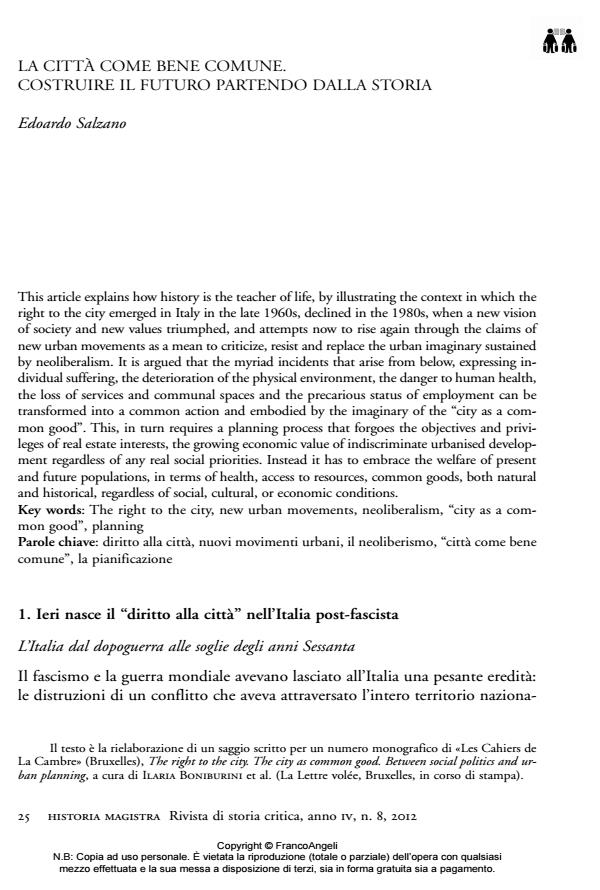La città come bene comune. Costruire il futuro partendo dalla storia
Journal title HISTORIA MAGISTRA
Author/s Edoardo Salzano
Publishing Year 2012 Issue 2012/8
Language Italian Pages 22 P. 25-46 File size 156 KB
DOI 10.3280/HM2012-008004
DOI is like a bar code for intellectual property: to have more infomation
click here
Below, you can see the article first page
If you want to buy this article in PDF format, you can do it, following the instructions to buy download credits

FrancoAngeli is member of Publishers International Linking Association, Inc (PILA), a not-for-profit association which run the CrossRef service enabling links to and from online scholarly content.
This article explains how history is the teacher of life, by illustrating the context in which the right to the city emerged in Italy in the late 1960s, declined in the 1980s, when a new vision of society and new values triumphed, and attempts now to rise again through the claims of new urban movements as a mean to criticize, resist and replace the urban imaginary sustained by neoliberalism. It is argued that the myriad incidents that arise from below, expressing individual suffering, the deterioration of the physical environment, the danger to human health, the loss of services and communal spaces and the precarious status of employment can be transformed into a common action and embodied by the imaginary of the "city as a common good". This, in turn requires a planning process that forgoes the objectives and privileges of real estate interests, the growing economic value of indiscriminate urbanised development regardless of any real social priorities. Instead it has to embrace the welfare of present and future populations, in terms of health, access to resources, common goods, both natural and historical, regardless of social, cultural, or economic conditions.
Keywords: The right to the city, new urban movements, neoliberalism, "city as a common good", planning
Edoardo Salzano, La città come bene comune. Costruire il futuro partendo dalla storia in "HISTORIA MAGISTRA" 8/2012, pp 25-46, DOI: 10.3280/HM2012-008004